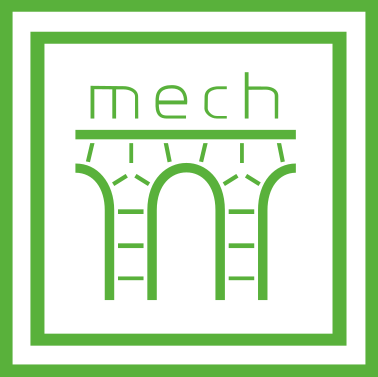Due to the ongoing research in the field of seismicity new and higher risk seismic areas found around the world. Furthermore after tsunamis in the recent years earthquake zone changes dramatically in coastal regions. Existing buildings in those areas within increasing risk of earthquake loads, especially high rise buildings which structure is not able to resist and may collapse when receiving those larger earthquake loads.
Strengthening those buildings structures becomes very important to ensure the safety of building occupants and to extend the life of the building. One of the existing methods of strengthening buildings on moderate and high seismic areas is external bracing that has been used in several places in the world, such as in New-Zealand, Japan and Italy.
The aim of the PhD dissertation is to improve the existing steel external bracing concept with new structural systems. These can be the so-called self-centering rocking frames or actively controlled dampers that are new and extensively researched structural systems in the USA and Japan. The supervisor has done research on rocking frames at Lehigh University, USA and the Department of Structural Engineering has experience with research on energy dissipating member namely with BRB’s. With the help of this PhD dissertation the department can join to this early stage research that can be applied on existing multi-story buildings that are at increasing risk for earthquake loads.
The research aims the following subtasks for three years:
- literature review on increased seismicity and the consequences; structural arrangements and design methods of existing external bracings; self-centering bracing systems and/or damper systems, materials; static and dynamic non-linear modeling methods;
- based on the literature review develop new external bracing systems and preliminary design methods to extend the life of buildings for increased earthquake loads;
- select benchmark buildings where the application of external bracing systems is relevant; develop numerical models; complete non-linear analysis, performance based design and reliability analysis;
- propose design methods for standardization of the new external bracing system and verify the design method with the research results.
- Chopra, K. (2011) Dynamics of Structures: Theory and Applications to Earthquake Engineering, Prentice Hall, Upper Saddle River, NJ, USA
- Georgios Tsionis, Roberta Apostolska, Fabio Taucer: Seismic strengthening of RC buildings, JRC Science and Policy Reports, Luxembourg: Publications Office of the European Union, 2014
- Görgülü, T., Y. S. Tama, S. Yilmaz, H. Kaplan and Z. Ay.: Strengthening of reinforced concrete structures with external steel shear walls. Journal of Constructional Steel Research 70: 226–235., 2012.
- Sarkisian, M., Mathias, N., and Long, E. (2012) Using Offset External Bracing to Optimize Tall Building Performance. Structures Congress 2012: pp. 836-847.
- Guidelines for Performance-Based Seismic Design of Tall Buildings, Developed by the Pacific Earthquake Engineering Research Center (PEER) as part of the Tall Buildings Initiative, Pacific Earthquake Engineering Research Center College of Engineering University of California, Berkeley November 2010
- JOURNAL OF CONSTRUCTIONAL STEEL RESEARCH
- STEEL AND COMPOSITE STRUCTURES
- INTERNATIONAL JOURNAL OF STRUCTURAL STABILITY AND DYNAMICS
- EARTHQUAKE ENGINEERING & STRUCTURAL DYNAMICS
- EARTHQUAKE ENGINEERING AND ENGINEERING VIBRATION
- MAGÉSZ ACÉLSZERKEZETEK
- PERIODICA POLYTECHNICA-CIVIL ENGINEERING
- G Akbas, N B Chancellor, J M Ricles, R Sause, E Tahmasebi, A L Joó: Evaluation of Performance-Based Design Methodology for Steel Self-Centering Braced Frame In: Proceedings of the Seventh International Conference on the Behaviour of Steel Structures in Seismic Areas (STESSA 2012). Konferencia helye, ideje: Santiago, Chile, 2012.01.09-2012.01.11. Santiago: pp. 737-743. (Proceedings of the Seventh International Conference on the Behaviour of Steel Structures in Seismic Areas (STESSA 2012))
- E Tahmasebi, N B Chancellor, J M Ricles, R Sause, G Akbas, A L Joó: Collapse Performance of Steel Self-Centering Braced Frame Systems In: Proceedings of the Seventh International Conference on the Behaviour of Steel Structures in Seismic Areas (STESSA 2012). Konferencia helye, ideje: Santiago, Chile, 2012.01.09-2012.01.11. Santiago: pp. 745-751. (Proceedings of the Seventh International Conference on the Behaviour of Steel Structures in Seismic Areas (STESSA 2012))
- Dulácska Endre, Joó Attila, Kollár László: Tartószerkezetek tervezése földrengési hatásokra: az Eurocode alapján, Budapest: Akadémiai Kiadó, 2008. 353 p. (ISBN:978-963-05-8519-4)
- Vigh László Gergely, Hortobágyi Zsolt, Pohl Ákos, Joó Attila: Vigh László Gergely (szerk.) Szerkezetek szeizmikus analízise számítógéppel: Példatár, Budapest: TERC Kereskedelmi és Szolgáltató Kft., 2013. 172 p. (ISBN:978-963-9968-99-8)
- Ádány S, Joó A L, Schafer B W: Buckling Mode Identification of Thin-Walled Members by using cFSM Base Functions, THIN-WALLED STRUCTURES 48:(10-11) pp. 806-817. (2010)
